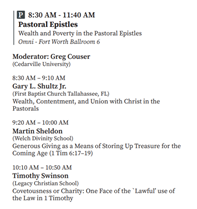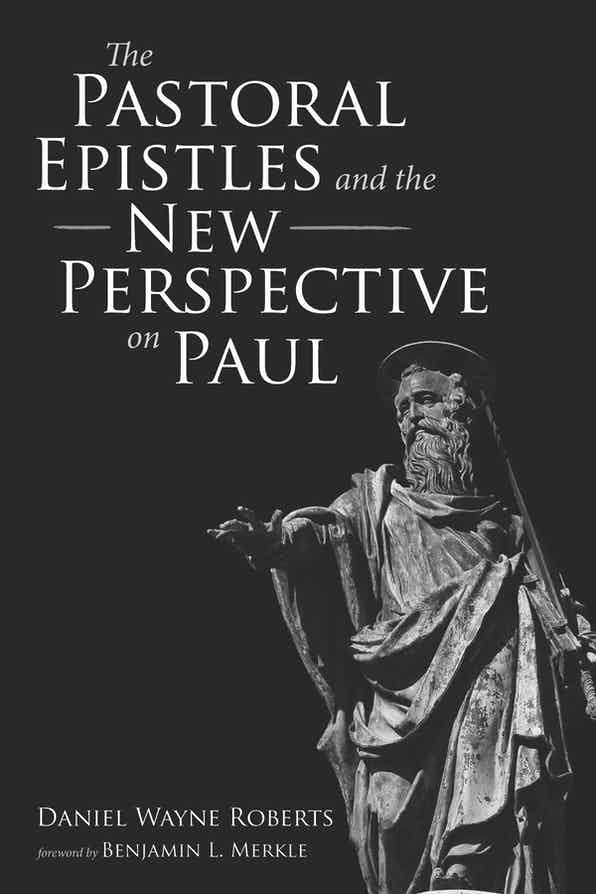You may have been unaware, as I was until yesterday, that a good number of Pastorals commentaries and monographs are available in full at archive.org. With a free account, you can “borrow” the volumes for an hour at a time, renewable every hour pending availability.
Bartsch, Die Anfänge urchristlicher Rechtsbildungen: Studien zu den Pastoralbriefen
Beker, Heirs of Paul. Their Legacy in the New Testament and the Church Today
Brandt, Das anvertraute Gut. Eine Einführung in die Briefe an Timotheus und Titus
Brox, Die Pastoralbriefe: 1 Timotheus, 2 Timotheus, Titus (RNT) (note this is the 1969 4th edition, not the 1989 5th edition)
Dibelius, Die Pastoralbriefe (HNT) (note this is the 1966 4th and final edition, revised by Hans Conzelmann)
Donelson, Colossians, Ephesians, 1 and 2 Timothy, and Titus
Guthrie, The Pastoral Epistles, rev. ed. (TNTC)
Hanson, The Pastoral Letters (CBC)
Harding, What Are They Saying about the Pastoral Epistles?
Harrison, The Problem of the Pastoral Epistles
Holtz, Die Pastoralbriefe (THKNT) (note this is the 1965 edition; the final edition of Holtz was the 5th, published in 1992)
Houlden, The Pastoral Epistles
Jeremias, Die Briefe an Timotheus und Titus (NTD) (note this is an early edition from 1947; the 12th and latest edition is from 1981)
Johnson, 1 Timothy, 2 Timothy, Titus (KPG)
Karris, The Pastoral Epistles (NTM)
Kelly, A Commentary on the Pastoral Epistles
Kidd, Wealth and Beneficence in the Pastoral Epistles
Knight, The Faithful Sayings in the Pastoral Letters
Kroger and Kroger, I Suffer Not a Woman: Rethinking 1 Timothy 2:11-15 in Light of Ancient Evidence
Lau, Manifest in Flesh: The Epiphany Christology of the Pastoral Epistles
de Lestapis, L’énigme des Pastorales de Saint Paul
Liefeld, 1 & 2 Timothy / Titus (NIVAC)
Lütgert, Die Irrlehrer der Pastoralbriefe
MacDonald, The Legend and the Apostle: The Battle for Paul in Story and Canon
Maier, Die Hauptprobleme der Pastoralbriefe Pauli
Malina and Pilch, Social-Science Commentary on the Deutero-Pauline Letters
Martin, Pauli Testamentum: 2 Timothy and the Last Words of Moses
Meinertz, Die Pastoralbriefe des heiligen Paulus
Metzger, Der Christushymnus 1. Timotheus 3,16: Fragment einer Homologie der paulinischen Gemeinden
Mounce, The Pastoral Epistles (WBC)
Oberlinner, Die Pastoralbriefe: Kommentar zum Titusbrief (HTKNT)
Oberlinner, Die Pastoralbriefe: Kommentar zum zweiten Timotheusbrief (HTKNT)
Oden, First and Second Timothy and Titus (IBC)
Quinn, The Letter to Titus (AB)
Ramos, I Timoteo, II Timoteo, y Tito
Ridderbos, De Pastorale brieven
Schlarb, Die gesunde Lehre. Häresie und Wahrheit im Spiegel der Pastoralbriefe
Schlatter, Die Kirche der Griechen im Urteil des Paulus: Eine Auslegung seiner Briefe an Timotheus und Titus (note this is the 1958 second edition; a third edition was published in 1983)
Spain, The Letters of Paul to Timothy and Titus
Spicq, Les Épîtres pastorales (note this is the 1943 edition, which I believe is the 1st edition. Typically, the 4th edition from 1969 is used for scholarly work)
Thurston, The Widows: A Women’s Ministry in the Early Church
Towner, The Letters to Timothy and Titus (NICNT)
Trummer, Die Paulustradition der Pastoralbriefe
Wilson, Luke and the Pastoral Epistles



